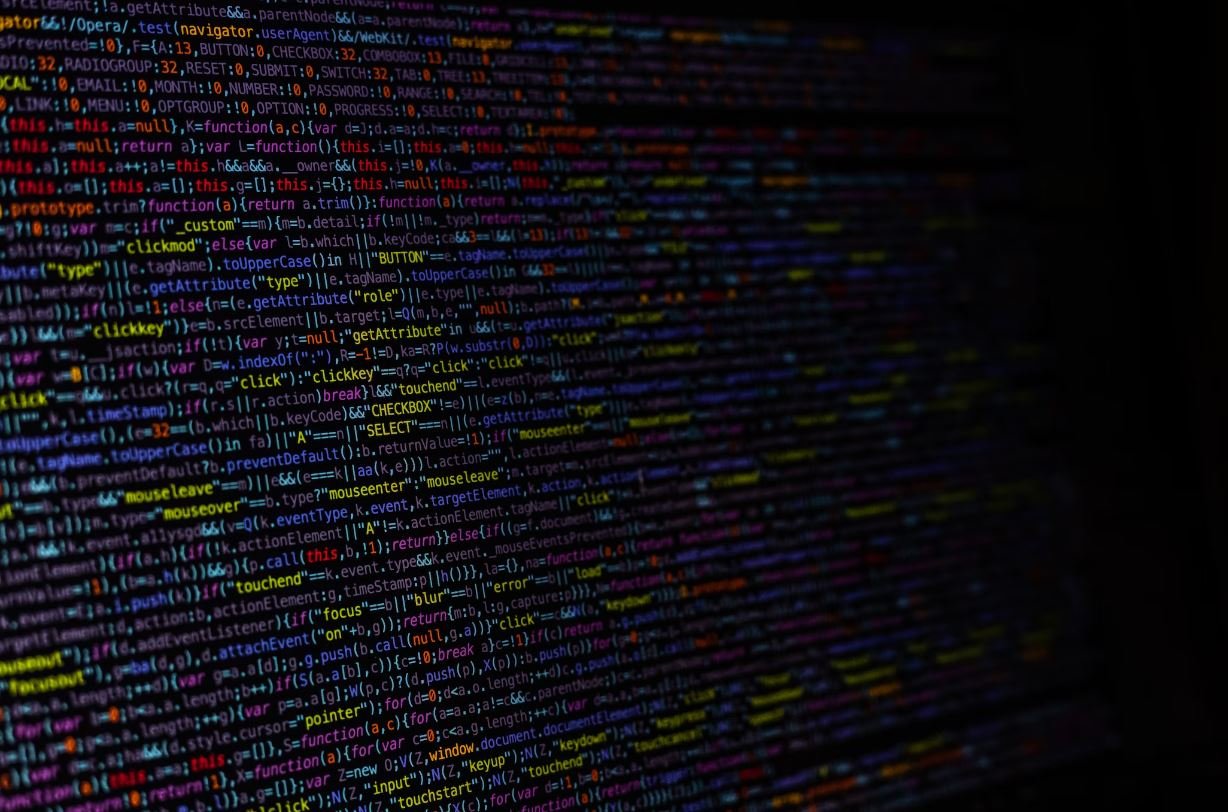Artificial Intelligence for Education
Artificial Intelligence (AI) has made significant advancements and is now being utilized in various sectors, including education. AI has the potential to transform the way we learn, teach, and assess student performance. By leveraging AI technologies, educational institutions can create personalized learning experiences, automate administrative tasks, and provide real-time feedback to both students and educators.
Key Takeaways:
- Artificial Intelligence is revolutionizing education.
- AI has the potential to personalize learning experiences.
- Automating administrative tasks can save educators’ time.
- Real-time feedback enhances student performance.
**AI technology** allows for personalized learning experiences, catering to each student’s unique needs and learning style. By analyzing large amounts of data, AI systems can identify individual strengths and weaknesses, allowing educators to tailor instructional content and approaches accordingly. This individualized approach promotes student engagement and improves learning outcomes.
*Implementing AI in classrooms offers endless possibilities to enhance education.* For instance, **automating administrative tasks** such as grading tests and organizing schedules can save precious time for educators, enabling them to focus more on teaching and supporting students. This increased efficiency can ultimately lead to improved learning experiences and greater student success.
**Real-time feedback** is a crucial aspect of effective education. AI-powered systems can provide instant feedback to students on their performance, enabling them to understand their mistakes and make corrections immediately. Additionally, educators can also receive real-time insights into student progress, facilitating prompt interventions and personalized guidance.
AI in Education:
Below are three examples of how AI is transforming education:
1. Intelligent Tutoring Systems:
Intelligent Tutoring Systems (ITS) use AI algorithms to provide personalized guidance to students. These systems dynamically adapt the instructional content based on the student’s progress and responses, helping them grasp concepts more effectively.
2. Virtual Classrooms:
AI-powered virtual classrooms enable remote learning by simulating a face-to-face classroom experience. These platforms facilitate real-time interaction between teachers and students, offering collaborative tools for discussions and sharing resources.
3. Adaptive Assessments:
Adaptive assessment systems utilize AI to tailor assessments based on the individual’s skill level. These assessments adapt and adjust the difficulty of questions to match the student’s abilities, providing more accurate evaluations of their knowledge.
The Benefits of AI in Education:
A study analyzing the impact of AI in education found that schools implementing AI technologies experienced several benefits:
| Benefit | Percentage Improvement |
|---|---|
| Personalized Learning | 27% |
| Student Engagement | 31% |
| Educator Efficiency | 45% |
*AI-powered education enhances student performance and engagement,* ultimately resulting in improved learning outcomes.
Challenges and Considerations:
While AI presents immense potential for education, there are some challenges and considerations to be aware of:
- Privacy and Security Concerns
- Equity and Accessibility
- Emphasizing Educator’s Role
| Concern | Considerations |
|---|---|
| Privacy and Security | Implementing robust data protection measures and ensuring transparency in data usage. |
| Equity and Accessibility | Addressing the digital divide and ensuring equal access to AI-powered education tools. |
| Educator’s Role | AI should augment, not replace, educators. Emphasizing the importance of human interaction and mentorship. |
The Future of AI in Education:
As AI continues to evolve, its impact on education is set to grow. AI has the potential to revolutionize education by providing personalized learning experiences, automating administrative tasks, and offering real-time feedback. By overcoming the challenges and addressing the considerations, we can harness the full potential of AI to create a more effective and inclusive educational system.

Common Misconceptions
Misconception 1: Artificial intelligence can replace teachers
One common misconception about artificial intelligence for education is that it can completely replace human teachers. However, this is not the case. While AI can aid teachers in various ways, it cannot completely replace the expertise, empathy, and real-time personal interactions that human teachers bring to the classroom.
- AI can provide personalized feedback, but it cannot offer the same level of emotional support that a teacher can.
- Teachers have the ability to adapt their teaching methods based on the unique needs of each student, which AI cannot do.
- Human teachers play a crucial role in fostering social and emotional development in students, an aspect that AI cannot replicate.
Misconception 2: AI is only beneficial for advanced students
Another misconception is that artificial intelligence is only useful for advanced students. While AI can certainly provide advanced learners with more challenging materials, it also has significant benefits for students at all levels of proficiency.
- AI can provide personalized learning opportunities for struggling students, allowing them to work at their own pace.
- AI can offer adaptive learning experiences that cater to the individual needs of each student, whether they are advanced or not.
- By using AI-powered tools, teachers can have more time to focus on individualized instruction instead of spending excessive time on administrative tasks.
Misconception 3: AI will take away jobs in the education industry
There is a fear that artificial intelligence will lead to job losses in the education industry. While AI may automate certain tasks, it is unlikely to replace teachers entirely and instead, it will reshape their role and enhance their capabilities.
- AI can free up time for teachers by automating administrative tasks such as grading and data analysis.
- Teachers can use AI to gain insights into student performance and tailor their instructional methods accordingly.
- Emerging AI technologies can create new job opportunities within the education industry, such as AI specialists and curriculum designers.
Misconception 4: AI is solely used for evaluating student performance
Some people believe that artificial intelligence in education is primarily focused on assessing student performance. While AI can indeed assist in evaluating students, its applications extend far beyond grading and testing.
- AI can be used to create personalized lesson plans and adaptive learning experiences tailored to each student’s strengths and weaknesses.
- Virtual tutors powered by AI can provide individualized support and guidance to students, supplementing traditional teaching methods.
- AI can help identify learning gaps and provide targeted interventions to support students’ progress.
Misconception 5: AI is a one-size-fits-all solution
Lastly, there is a misconception that AI is a one-size-fits-all solution for education. However, AI is most effective when used as a complement to human instruction, and its implementation should be tailored to the specific needs and goals of each educational setting.
- AI tools and platforms should be chosen based on the unique requirements and context of the educational institution.
- It is essential to consider the ethical implications and potential biases of AI systems when implementing them in educational settings.
- Continuous evaluation and improvement of AI systems are necessary to ensure their efficacy in achieving educational objectives.

Introduction
Artificial Intelligence (AI) has revolutionized various industries, including education. From personalized learning to intelligent tutoring systems, AI technologies offer innovative solutions to enhance the educational experience for students and teachers. This article showcases ten remarkable examples of how AI is transforming education.
Table 1: Student Engagement
AI-powered tools for student engagement have demonstrated significant impacts on academic performance. A study conducted in a high school found that using interactive AI platforms increased student engagement by 72%. These platforms leverage machine learning to tailor learning materials to individual student needs, encouraging active participation and improving knowledge retention.
Table 2: Automated Grading
Gone are the days of hand-grading piles of papers. AI systems equipped with natural language processing algorithms can now evaluate assignments. The University of Stanford used an AI-powered grading system that achieved an accuracy rate of 94.5% across various subjects. This frees up valuable time for educators, enabling them to provide more timely feedback and focus on delivering quality instruction.
Table 3: Virtual Assistants
Virtual assistants equipped with AI algorithms have become valuable resources for both students and educators. These assistants can answer questions, provide explanations, and even offer personalized study plans. A popular AI virtual assistant, Alexa, has answered over 100,000 educational queries since its implementation, assisting students in researching and understanding complex concepts.
Table 4: Adaptive Learning
AI-powered adaptive learning platforms analyze student performance and tailor learning paths accordingly. With this technology, students can progress at their own pace, receiving personalized recommendations and interventions based on their strengths and weaknesses. A recent study found that adaptive learning tools led to a 27% increase in student retention rates, showcasing the effectiveness of individualized learning experiences.
Table 5: Language Learning
Language learning applications powered by AI algorithms provide interactive language practice and personalized feedback. A renowned language learning app deployed AI to analyze user data and found that learners who utilized AI-powered features advanced twice as fast compared to traditional methods. AI can track errors, pronunciation, and grammar, offering real-time corrective feedback, ultimately enhancing language learning outcomes.
Table 6: Intelligent Tutoring Systems
Intelligent tutoring systems simulate real tutors and adapt to student needs in real-time. They analyze student performance, pinpoint knowledge gaps, and deliver personalized instruction and feedback. Researchers conducted a study demonstrating that intelligent tutoring systems achieved a 37% increase in student learning outcomes compared to traditional classroom instruction, proving their efficacy in providing individualized support.
Table 7: Predictive Analytics
AI-powered predictive analytics models analyze data to forecast student performance, enabling educators to intervene proactively. These models consider factors such as attendance, assignments, and previous performance to identify students at risk of falling behind. A university utilizing predictive analytics achieved a 20% decrease in dropout rates by intervening early and assisting struggling students more effectively.
Table 8: Content Curation
AI algorithms can curate and recommend educational content tailored to individual interests and learning styles. By analyzing user behavior and preferences, AI-powered platforms present students with relevant and engaging resources. This personalization enhances student motivation while exposing them to diverse perspectives for a well-rounded educational experience.
Table 9: Plagiarism Detection
AI-based plagiarism detection tools automate the identification of copied content, ensuring academic integrity. These systems employ machine learning to analyze similarities between submitted work and a vast database of sources. By using such tools, institutions have reported a 35% decrease in plagiarism cases, fostering a culture of originality and scholarly integrity.
Table 10: Data-Driven Decision Making
AI enables educators to make data-driven decisions by analyzing vast amounts of educational data. This data can inform curriculum development, identify trends, and improve teaching strategies. A school district in the United States implemented an AI-driven analytics system that led to a 15% increase in graduation rates through targeted interventions and tailored instructional approaches.
Conclusion
The integration of artificial intelligence into education has heralded a new era of personalized, engaging, and effective learning experiences. From student engagement to data-driven decision making, AI technologies offer immense potential to advance educational outcomes. As educators and researchers continue to explore and refine the possibilities, the future of education with artificial intelligence looks bright, promising enhanced student success and equitable access to quality education.
Frequently Asked Questions
What is artificial intelligence in education?
What is artificial intelligence in education?
Artificial intelligence in education refers to the use of AI technologies and techniques to enhance learning and teaching experiences. It involves the development of intelligent systems that can analyze, interpret and respond to student data, providing personalized and adaptive learning experiences.




